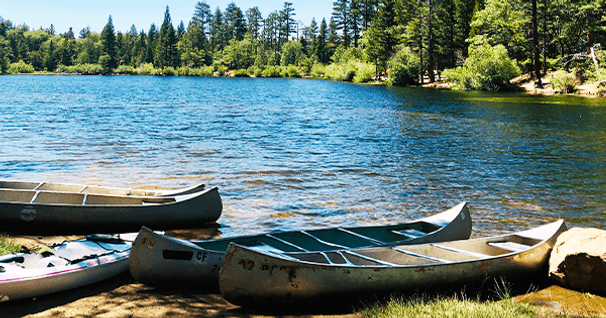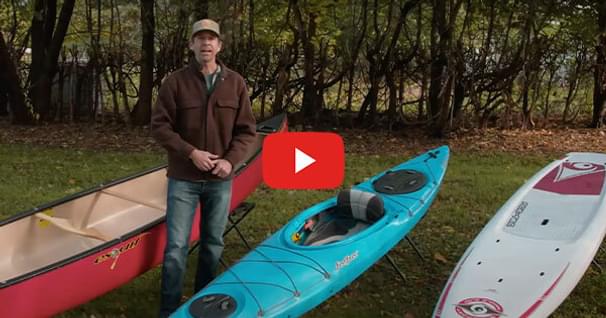How to Get Started Kayaking - Basic Gear
Kayaks come in a variety of shapes and sizes and can be made from many different materials. Each design has a specific use in mind and many kayaks can work well for a variety of uses. Let's identify the parts of the kayak and look at the gear you'll need to get on the water.
Parts of a Kayak
- The bottom of a kayak is called the hull and the top is called the deck.
- The front of the kayak is the bow, and the back is called the stern.
- There are grab handles or toggles attached to the bow and stern for carrying the boat.
- The openings are called hatches, and there is generally a wall inside sealing the compartment. These are called bulkheads. They keep the compartments relatively dry and provide buoyancy in case of a capsize. Many hatch covers work like a tupperware style lid, sealing around the molded rim.
- The area where you sit is called the cockpit, and the seat is where you sit.
Many seats are adjustable and provide comfort and support. Sitting up straight is the best posture for good technique, allowing core muscles to engage for maximum efficiency. - There are adjustable foot braces inside that support your legs. Find the adjustment of the seat and foot braces that is the most comfortable. It's easy to fine tune your fit once you get on the water.
- The rim around the cockpit is called a coaming and allows you to use an accessory spray skirt which protects the cockpit from the water splashes and waves, and will provide some warmth and sun protection.
50 years of lightweight, maneuverable, high-performing kayaks.
Check out this interview with Tom Keane, Eddyline Kayaks Co-Owner, on their journey!
Kayak Paddles
You don't want to be up a creek without a paddle, so let's look at kayak paddles. This is the link between you and the water and it's going to propel you in your kayak all day long, so don't skimp on your paddle. Paddles come in a variety of shapes, lengths, and materials. The paddle has a shaft and two blades. The blades have a power face and a back face. We use the power face for paddling forward and the back face for reverse. There is no need to flip your paddle over for reverse.
Big blades are good for strong paddlers and require more power to draw through the water. Smaller blades suit paddlers that are smaller or stronger paddlers looking for a higher cadence style stroke. Paddle length will be based on your height, the width of the boat, and personal preference. Most kayak paddles will fall between 220 centimeters and 240 centimeters.
Paddles can be used in a variety of offsets or feather angles. The offset is for efficiency in wind and also encourages good body rotation. No offset is also a good option, allowing you to paddle without having to twist the shaft. You will want to play around with this option and find what works best for you. You hold the paddle like this, with arms about at 90 degree angles.
Personal Flotation Device
You'll also want a good fitting, comfortable PFD, short for personal flotation device. Your PFD is like a seatbelt in your car. Wear it whenever you are on the water. A PFD and a whistle are required by federal law, and you should become familiar with your state's requirements regarding PFD use. Make sure it's adjusted correctly. It won't work very well if it's not.
Clothing Considerations
When choosing what to wear while paddling, there are a few things that you'll want to take into consideration: air and water temperature, wind factor, and sun exposure. There are a lot of options in this arena and understanding the dangers of both hypothermia (the chilling of the body) and hyperthermia (the overheating of the body), are a key to your safety and comfort on the water.
Additional Tips
Carrying some extra dry clothes and food in a secure, dry bag is always a good plan. And don't forget about drinking water and sunscreen. These basics can help you enjoy your time on the water. And remember to always use good judgment and not be out in conditions that might capsize you. Knowing your local waterway and possible dangers that exist is key to good safety on the water.
Related Articles
Remember when you bought your first car? Or maybe it was a bike. You may have chosen it for its color,…
Ken Whiting answers the big question for new paddlers - Do you go for a canoe, a kayak, or a stand up…
In this video, Ken Whiting explains the top 5 reasons to choose an upgraded kayak. Some of these…
Paddle boards come in a wide variety of shapes and sizes and it's important to choose the right one,…




